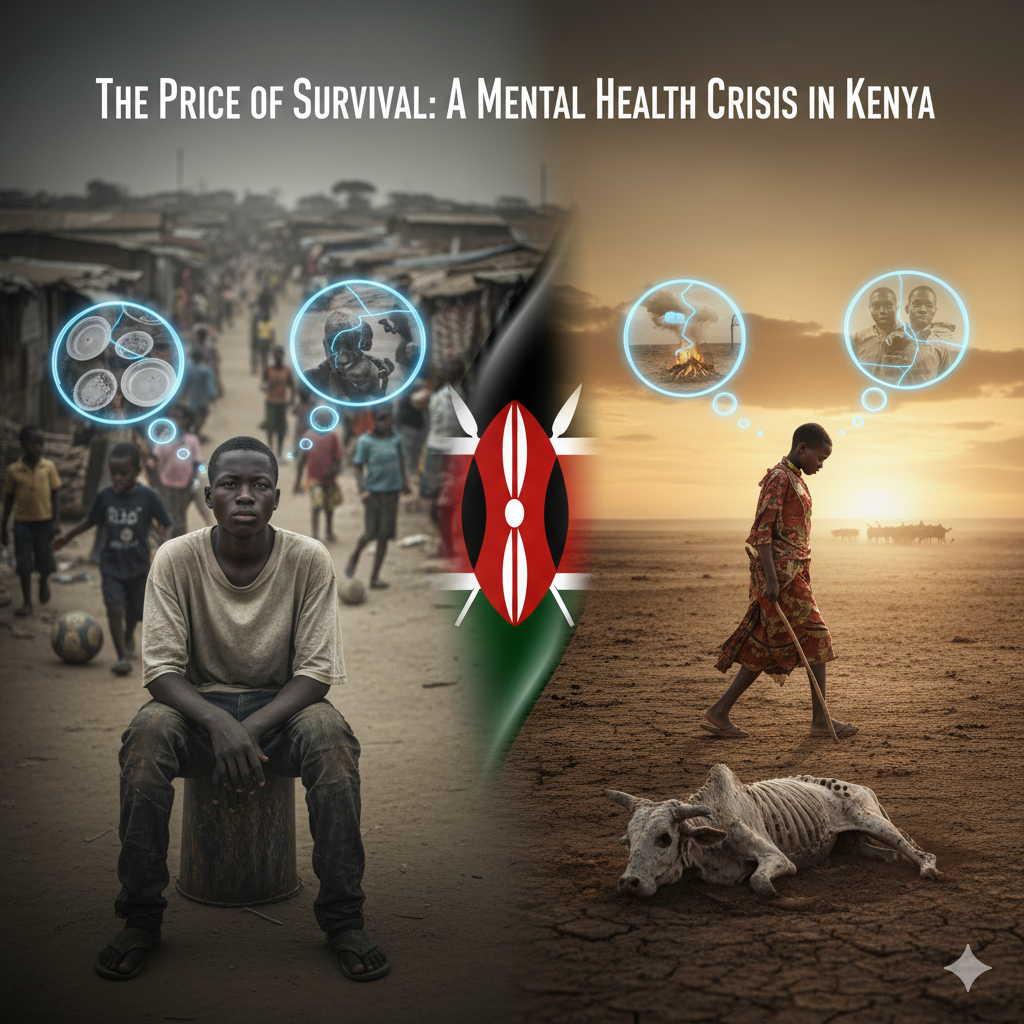Written by Yvonne Misando
In the narrow, winding alleys of Kenya’s informal settlements, where the air is heavy with waste and the sounds of struggle, a silent crisis is taking root. A teenager who dropped out of school sits idle, staring blankly as the world moves on. Their mind is restless, trapped in worries about where the next meal will come from or whether violence will break out in the street. This constant uncertainty chips away at their self-worth. They may become withdrawn, irritable, or lose interest in the things they once enjoyed. Yet in a place where survival comes first, these symptoms are dismissed as laziness or a bad attitude. The emotional weight is ignored because physical needs take priority.
Mental health challenges are especially severe in Kenya’s marginalized communities. They are most visible in informal settlements, arid lands, and among adolescents who are out of school, but to the rest of the country, this crisis remains largely invisible. In settlements like Kibera and Mathare, young people face unique stressors. Many drop out of school due to poverty or family responsibilities, leaving them with little to do and no hope for the future. Surrounded by crime, poverty, and violence, they live in a state of chronic anxiety and depression. Families often misread these struggles as indiscipline, overlooking the deeper psychological distress. Survival demands food, work, and shelter overshadow the silent battles inside.
Far from the city, under the scorching sun of northern Kenya, another kind of struggle unfolds. A young herder walks past the skeletal remains of livestock that once sustained their family. The drought has taken more than animals. It has stolen a way of life, leaving behind grief, hunger, and despair. Inter-communal conflicts over scarce resources deepen the trauma, and young people carry the scars of a changing world. Nightmares, flashbacks, and hopelessness haunt them, but these struggles are often dismissed as part of life. They are told to be strong, to pray, to endure, never to speak of the invisible wounds that cut deeper than hunger.
For pastoralist communities like the Turkana and Borana, losing livestock is more than an economic setback. It is the loss of identity and culture. Conflict and displacement pile on new layers of trauma, with many experiencing post-traumatic stress. Yet once again, mental health is seen as weakness rather than a condition that needs care.
Whether in the crowded alleys of the city or the dry plains of the north, one thread connects these young people. Their mental health struggles remain hidden and untreated. Kenya’s mental health services are scarce, with most professionals based in major cities, leaving rural and marginalized communities without access to help. Stigma makes the situation worse. Mental illness is often viewed as a curse, a spiritual problem, or a personal failure, making it harder for people to speak out or seek treatment. The lack of data and research in these areas further hides the scale of the crisis, leaving policymakers without the information they need to act.
In the end, what remains is a heavy silence. Young people carry a burden of pain that no one sees. Their struggles are hidden in the shadows, overshadowed by the daily fight for survival. Unless recognized and addressed, this crisis will remain a forgotten chapter in Kenya’s story.

